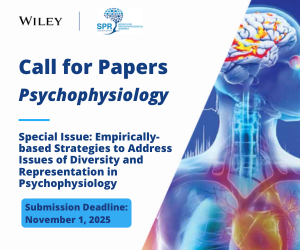Journal list menu
Export Citations
Download PDFs
ISSUE INFORMATION
SPECIAL ISSUE
Registered replication report of the construct validity of the error-related negativity (ERN): A multi-site study of task-specific ERN correlations with internalizing and externalizing symptoms
- First Published: 28 December 2023
This registered replication report supported the convergent validity of ERN recorded during flanker, Go/no-go, and Stroop tasks. Convergent validity of ΔERN across tasks was not replicated, and ERN did not show divergent validity from N2. ERN and ΔERN were unrelated to internalizing/externalizing symptoms. These findings underscore the importance of considering the psychometric validity of ERPs as it provides a foundation for interpreting and comparing ERPs across different tasks and studies.
SPECIAL ISSUES: EFFECTS OF tVNS ON BRAIN AND COGNITION
Transcutaneous auricular vagus nerve stimulation modifies cortical excitability in middle-aged and older adults
- First Published: 11 April 2024
Transcutaneous auricular vagus nerve stimulation (taVNS) modulates cortical excitability in the primary motor cortex (M1) contralateral to the stimulated ear in healthy middle-aged and older adults. The likely underlying mechanisms are an increase in GABAAergic inhibition and a decrease in glutamatergic activity that mediates I-wave generation. The duration of taVNS seems to be important, as effects were observed after 60 min of stimulation but not after 30 min.
ORIGINAL ARTICLE
Improving memory through choice and deliberation in decision-making: Evidence from ERPs
- First Published: 30 July 2024
The first ERP report on the neural mechanisms of how choice and deliberation promote memory. According to the LPC old/new effect, value encoding was a potential mechanism for chosen items in a certain decision. However, in terms of the FN400 old/new effect, the memory advantage of chosen items was weakened by deliberation in uncertain decisions. These results suggest that decision-making can promote item memory through two independent processes: value encoding and elaboration encoding.
SPECIAL ISSUE ARTICLE
Electrophysiological correlates of why humans deviate from rational decision-making: A registered replication study
- First Published: 13 August 2024
This article presents crucial insights into deviations from rational decision-making paradigms by replicating and extending Hewig et al.'s (2011) seminal study. While reaffirming key findings, our work unveils novel psychophysiological nuances, advancing understanding of economic game decision-making, emphasizing its non-rational nature and the role of cognitive control.
Can transcutaneous auricular vagus nerve stimulation mitigate vigilance loss? Examining the effects of stimulation at individualized versus constant current intensity
- First Published: 21 August 2024
The present study examined the effects of taVNS at individualized (set by participant) versus constant (set at 0.5 mA for all participants) current intensity on behavioral and self-report scores associated with vigilance loss and salivary markers of locus coeruleus-norepinephrine activity. Although no positive effects of taVNS in mitigating the vigilance decrement were observed, we highlight the need to further investigate the effects of taVNS at different stimulation parameters on arousal states.
ORIGINAL ARTICLE
Neural correlates of trait anxiety in sensory processing and distractor filtering
- First Published: 08 October 2024
For the first time in a crossmodal sensory context, event-related potentials revealed a link between trait anxiety and task-dependent sensory selection. Trait anxiety was related to reduced neural correlates of visual but not tactile distractor gating, and not sensorimotor performance. These findings shed light on modality-specific sensory processing alterations resulting from individual differences in anxiety which did not manifest behaviorally.
Using a virtual reality game to train biofeedback-based regulation under stress conditions
- First Published: 09 October 2024
Breathing-based regulation of physiological stress responses offers a potential for anxiety management. A key challenge is to help people learn to do this in the context of an actual stressor. We used a stressful virtual reality (VR) game as a setting in which participants were encouraged to use breath-based regulation of their responses. Participants successfully achieved this, suggesting promise for VR-based gameplay to learn and practice biofeedback-related anxiety management.
Revealing the different levels of action monitoring in visuomotor transformation task: Evidence from decomposition of cortical potentials
- First Published: 14 October 2024
Our findings identified components, including the LRP, reafference potential (RAP), and motor post-imperative negative variation within the same study. Moreover, we revealed several RAPs occurring at critical response moments, highlighting the role of this sensory processing in response control.
Acute transcutaneous auricular vagus nerve stimulation modulates presynaptic SV2A density in healthy rat brain: An in vivo microPET study
- First Published: 20 October 2024
The effects of transcutaneous auricular vagus nerve stimulation (taVNS) for 30 min were detected in rats with in vivo microPET. Acute taVNS reduces in vivo [11C]UCB-J binding, a measure of presynaptic density. Acute taVNS does not modulate in vivo glucose metabolism measured by [18F]FDG uptake. Modulation of presynaptic density may promote the therapeutic effects of taVNS.
Prior exposure to racial discrimination and patterns of acute parasympathetic nervous system responses to a race-related stress task among Black adults
- First Published: 25 October 2024
We utilized an hidden Markov model approach to estimate rather than assume the presence of intraindividual variability in distinct latent acute parasympathetic nervous system states in response to a race-related stress task, finding that the majority of responses were characterized as blunted. Frequency of prior exposure to racial discrimination did not impact these states. Blunted reactivity could be screened for in Black young adults as an important form of physiological dysregulation.
Early visual modulation and selection predict saccadic timing during visual search: An ERP study
- First Published: 26 October 2024
Our results indicate that initial saccadic timing is predicted by the P1 and N1 responses to the search display onset, reflecting the role that both the modulation and selection of visual input have in determining saccade execution. We believe that these findings have an important role in helping to shape the growing body of literature surrounding models of eye movement behavior by finding neurophysiological evidence that supports roles for both information accumulation and decision processes in determining the speed of the impending saccadic decision.
The phobic brain: Morphometric features correctly classify individuals with small animal phobia
- First Published: 28 October 2024
Small animal phobia (SAP) is under-researched, with previous studies using limited, unbalanced samples and univariate analyses. This study employs for the first time a machine learning method to classify 32 SAP individuals based on structural MRI versus 90 matched controls. Key brain structures included frontal and temporal regions, as well as the amygdala and thalamus. In further analyses we showed that The default mode and the affective networks were among the most predictive networks.
The capacity limitations of multiple-template visual search during task preparation and target selection
- First Published: 03 November 2024
The mechanisms of search preparation during high-load search at working memory capacity are not very well understood. We used electrophysiological markers of attentional selection to show that participants can prepare for three colors simultaneously if they must, for example, because target colors appear randomly. However, if target colors alternate predictably, participants make use of strategic opportunities to reduce working memory load and only activate the one color template that is directly relevant for the upcoming search episode.
Patterns of adaptation to stress cardiovascular responses in smokers during ad libitum smoking and withdrawal
- First Published: 05 November 2024
This study extends the literature on smoking and patterns of cardiovascular reactivity and adaptation to recurrent stress. Here, we provide evidence for the negative impact of smoking on blood pressure habituation. Smokers exhibited less systolic blood pressure tolerance to stress. This poorer response profile may be a mechanism that leads to further cardiotoxic effects on health. The findings add to emerging literature by indicating that smoking is related to poorer adjustment across time.
Visual search attentional bias modification reduced the attentional bias in socially anxious individuals
- First Published: 11 November 2024
The ABM-positive-search training was employed to modify attentional bias in socially anxious individuals. The dot-probe task was used to measure the changes of attentional bias while recording electrical activity in the brain. We found, after training, individuals in the ABM-positive-search group had more obvious changes in attentional bias than those in the placebo control group.
Pupil size correlates with heart rate, skin conductance, pulse wave amplitude, and respiration responses during emotional conflict and valence processing
- First Published: 12 November 2024
We demonstrated trial-by-trial correlations between tonic and phasic pupil size and its derivative with heart rates, galvanic skin responses, pulse wave amplitude, and respiration rate and amplitude during an emotional face–word Stroop task, highlighting pupil size as an effective “real-time” index for autonomic arousal during emotional conflict and valence processing, arguably mediated by the locus coeruleus–norepinephrine system.
Neurophysiological mechanisms underlying the influence of motivational intensity on emotion regulation choice
- First Published: 12 November 2024
The study shows that motivation affects the choice of emotion regulation strategy between distraction and reappraisal by influencing early attention and cognitive processing, as reflected in frontal P2 and early LPP. These findings provide new support for the motivational dimensional model of emotion-cognition from the perspective of emotion regulation.
Enhanced neural sensitivity to brief changes of happy over angry facial expressions in preschoolers: A fast periodic visual stimulation study
- First Published: 18 November 2024
Employing the fast periodic visual stimulation (FPVS) EEG approach, we detected a reliable index of emotional expression change with enhanced processing for happy compared to angry faces in young children (4–6 years). Our findings highlight the potential of this method to detect the processing of expression change implicitly in a short amount of time.
Accelerometer-based heart rate adjustment for ambulatory stress research
- First Published: 19 November 2024
Conventional accelerometer-based additional heart rate focuses solely on concurrent movement intensity to predict heart rate. This study introduces a novel method to correct heart rate not only for ongoing physical activity but also for postural changes, type of physical activity, and past physical activity. This approach enhances the ability to differentiate between the impact of physical and mental demands on heart rate in daily life.
Impact of behavioral inhibitory control and startle reactivity to uncertain threat on youth suicide risk
- First Published: 10 December 2024
The present study examined the unique and interactive effects of behavioral inhibitory control and threat reactivity on suicide risk in youth. Results reveled that greater reactivity to unpredictable threat was associated with increased suicide risk at low, but not high, levels of inhibitory control. These findings shed light on subgroups of youth who may be at elevated risk.
Ambulatory autonomic nervous system activity in relation to hearing impairment
- First Published: 10 December 2024
Our research challenges the notion that those with hearing impairment have altered cardiac vagal activity or skin sympathetic activity in daily life (daytime & sleep) compared to those with normal hearing. However, hearing impairment did impact cardiac sympathetic activity, leading to a larger change between daytime and sleep.
Unexpected sounds induce a rapid inhibition of eye-movement responses
- First Published: 17 December 2024
There is a growing understanding that unexpected sounds trigger global inhibition of motor actions. Previous work has suggested that unexpected sounds can also inhibit microsaccades and eye movements during active vision tasks. Here we show that unexpected sounds cause rapid inhibition of the oculomotor system within a window of at least 175 ms when programming both voluntary and reflexive simple saccades. Unexpected sounds also aid response inhibition, thus showing that their effect is inhibitory in nature.
Within- and between therapist variability in movement and physiological synchrony and its effects on symptom change
- First Published: 17 December 2024
Our findings provide initial evidence that movement and EDA synchrony may be a characteristic of the dyad, demonstrating the predictive power of both synchrony modalities on the within-therapist (but not between-therapist) level for client symptom change. Furthermore, our results showed that movement and EDA synchrony are negatively correlated.
Emotion regulation strategies explain associations of theta and Beta with positive affect
- First Published: 17 December 2024
This article investigates the role of emotion regulation strategies in the relationship between frontal theta and beta band power and positive affect. Through self-report measures and spectral analysis of resting state EEG data, both theta and beta differentially predicted positive affect while an indirect effect of beta on positive affect via reappraisal was found.
REVIEW
Mental fatigue causes significant activation of the prefrontal cortex: A systematic review and meta-analysis of fNIRS studies
- First Published: 19 December 2024
In this paper, we reviewed and analysed studies using functional near-infrared spectroscopy to monitor haemoglobin changes in mental fatigue. This is significant because the potential for mental fatigue is huge and its detection has yet to be established. The findings of this review corroborate the efficacy of fNIRS as a predictive tool for early detection of mental fatigue, and that it is a robust method for monitoring brain activity during mental fatigue.
Preprocessing choices for P3 analyses with mobile EEG: A systematic literature review and interactive exploration
- First Published: 19 December 2024
Appropriate preprocessing is essential for deriving meaningful insights from mobile. Electroencephalography (EEG) data. Through a systematic review focusing on the P3 event-related potential during walking and standing, we uncovered a spectrum of preprocessing approaches. Additionally, we presented an interactive visualization tool to facilitate the exploration and comparison of preprocessing strategies. This tool may advance mobile EEG research practices by fostering informed decision-making and transparency.
ORIGINAL ARTICLE
The influence of lexical word properties on selective attention to emotional words: Support for the attentional tuning of valent word forms
- First Published: 20 December 2024
Selective attention to specific levels of valence was found to facilitate the early affective event-related brain potentials (ERPs) discrimination of target words. We show that this effect particularly benefits from low word length and high word frequency, confirming the important role of prior associative learning between word forms and affect for early ERP effects of affective words. Additionally, the interaction of affective word properties (valence and arousal) supports the idea of valence–arousal conflict.
Neural Reactivity to Emotional Stimuli in Children With and Without a History of Self-Injurious Thoughts and Behaviors
- First Published: 23 December 2024
Consistent with the positive attenuation hypothesis and with findings in depressed individuals, children with a history of self-injurious thoughts and behaviors (SITBs) displayed significantly smaller late positive potential responses to ambiguous (i.e., medium intensity) positive emotional stimuli than children without a history of SITBs. Additionally, findings suggest that children's SITB history is associated with differential neural sensitivity to emotional stimuli rather than a more general difficulty in recognizing facial expressions.
Can earlobe stimulation serve as a sham for transcutaneous auricular vagus stimulation? Evidence from an alertness study following sleep deprivation
- First Published: 27 December 2024
This study explored the differences between taVNS and earlobe stimulation (ES) in modulating alertness levels. The results indicated that while taVNS and ES differ in their effects on physiological markers, their impact on behavioral measures is similar. This suggested that ES may not be a completely neutral control for taVNS.
Accelerated Neurocomputation in Human Decision-Making Under Time Pressure
- First Published: 30 December 2024
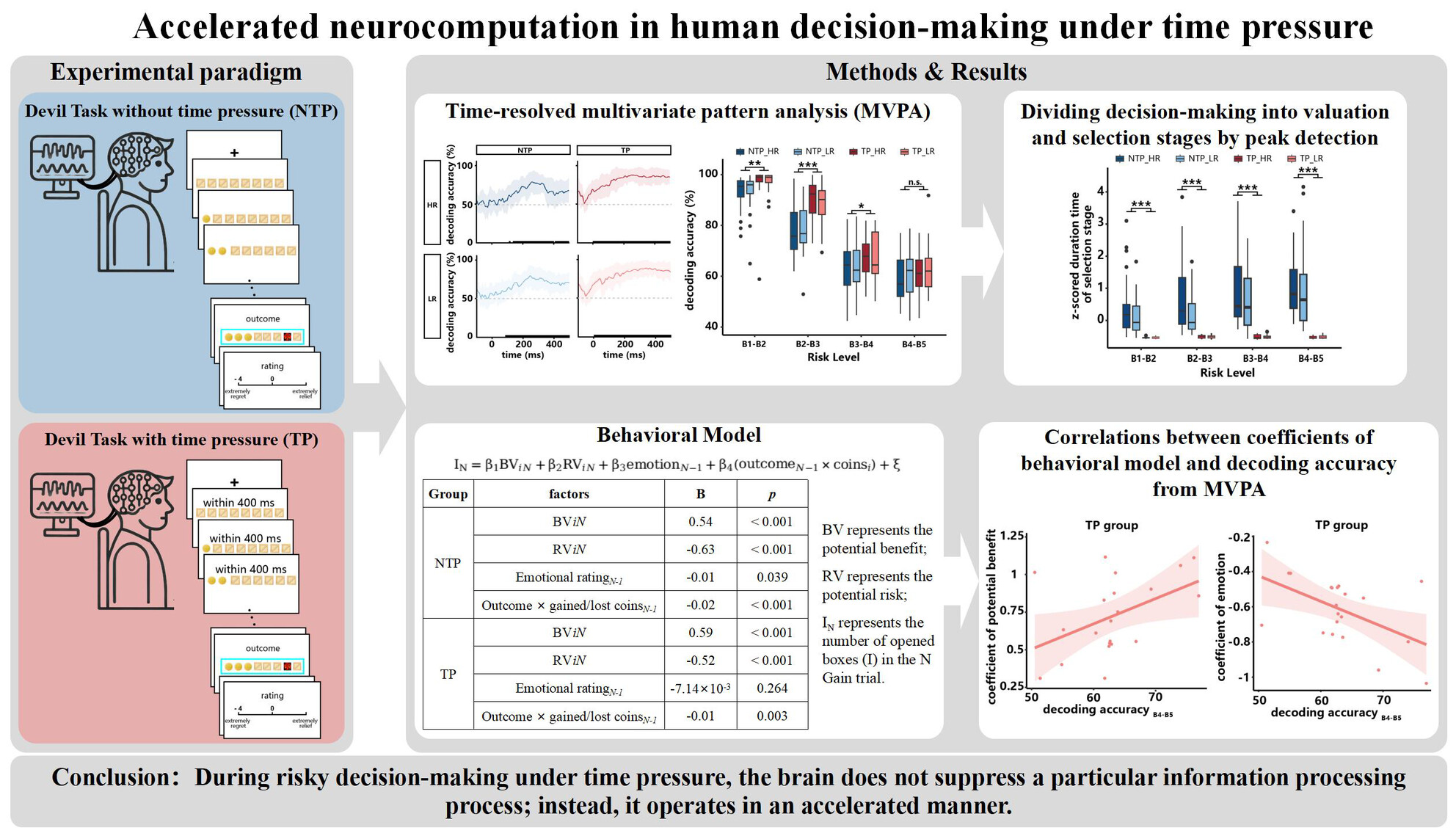
The current study found more conservative decision-making under time pressure, with participants assigning greater weight to potential benefits than risks. Furthermore, instead of suppressing specific information processing, their brains accelerated the processing of all information when there was time pressure.
Unexpected Twists: Electrophysiological Correlates of Encoding and Retrieval of Events Eliciting Prediction Error
- First Published: 30 December 2024
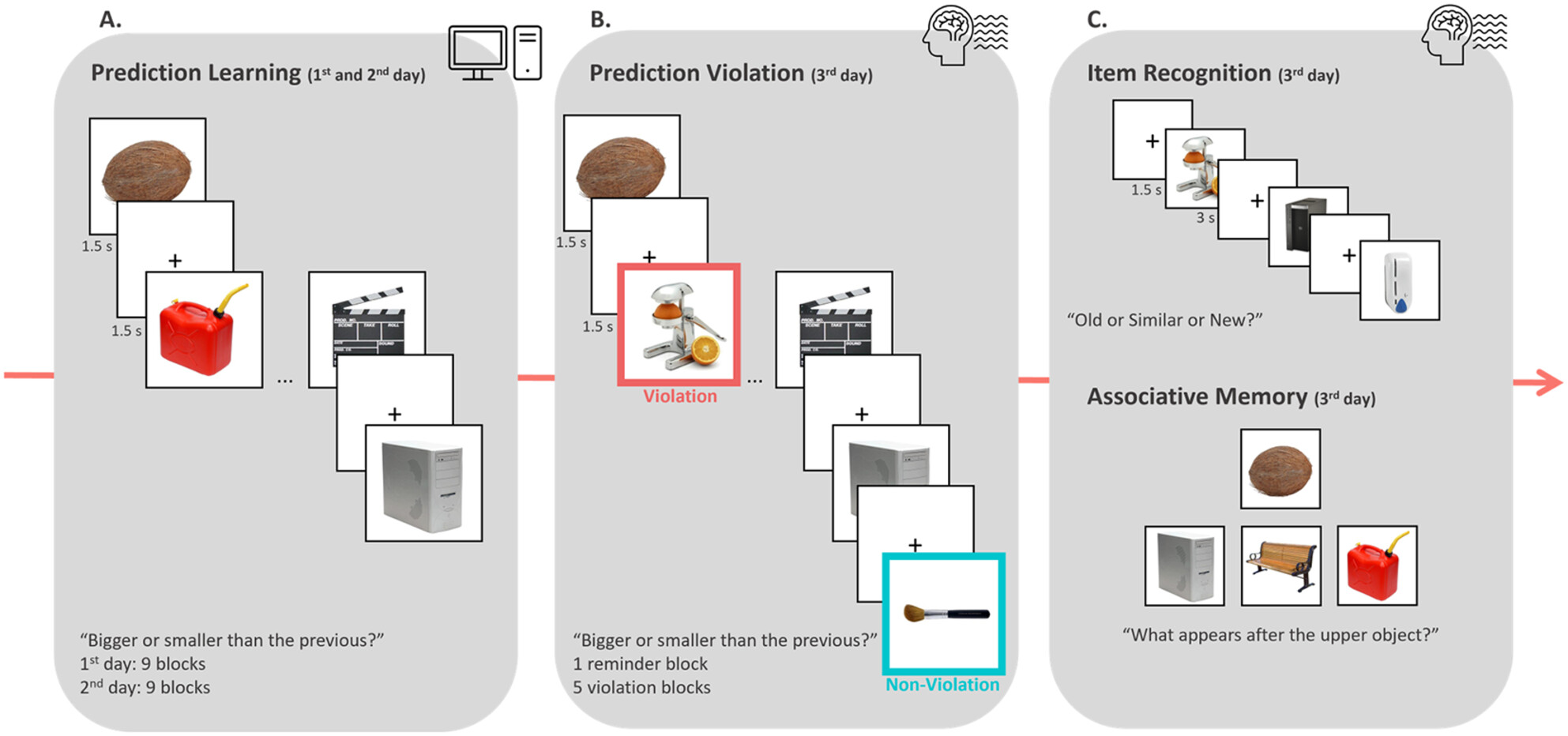
Impact Statement
Our study investigates the neural mechanisms underlying the effects of prediction errors (PE) on memory processes, specifically encoding and retrieval. In a statistical learning paradigm, predictions were violated, and their memory was tested. Contrary to our expectations, behavioral results did not demonstrate a memory advantage for PE-induced events. Nonetheless, our findings highlight the significance of recollection in the link between PE and memory.
Neighborhood Crime Risk and Racial/Ethnic Differences in Children's Neural Reactivity to Emotional Stimuli
- First Published: 05 January 2025
We examined links between census-derived indices of neighborhood crime risk and event-related potential (ERP) indices of neural reactivity to emotional stimuli in a community sample of 7- to 11-year-old children. We found that higher levels of neighborhood crime risk were associated with larger late positive potential (LPP) amplitudes to full intensity threat-relevant stimuli (fearful faces) but not nonthreat negative (sad faces) or positive (happy faces) stimuli, but only for children from racial/ethnic minority backgrounds and not for non-Hispanic White children. These results suggest that living in higher crime areas may differentially impact racial/ethnic minority children and point to a potential neural marker of risk in these youth.
Associations Among EEG Aperiodic Slope, Infant Temperament, and Maternal Anxiety/Depression Symptoms in Infancy
- First Published: 06 January 2025
In this study, we demonstrate novel associations among EEG aperiodic slope, the temperament domains of orienting/regulation and surgency, and maternal anxiety/depressive symptoms in infancy. The results highlight that slope is associated with socioemotional outcomes as early as infancy and suggest that slope may index sensitivity to early environmental stressors.
Aperiodic Pupil Fluctuations at Rest Predict Orienting of Visual Attention
- First Published: 06 January 2025
This study demonstrates for the first time that the aperiodic component of resting pupil fluctuations can predict the excitation/inhibition balance in attentional processing. The results suggest that pupil fluctuations are as informative as neural signals from other neuroimaging modalities. This study provides a potential biomarker for the assessment of attentional processing and attention-deficit hyperactivity disorder.
SPECIAL ISSUE ARTICLE
Transcutaneous Auricular Vagus Nerve Stimulation Does Not Accelerate Fear Extinction: A Randomized, Sham-Controlled Study
- First Published: 08 January 2025
This study tested whether continuous transcutaneous auricular vagus nerve stimulation (taVNS) at maximal intensity below pain accelerates fear extinction learning in a large sample. Our clear null findings add to existing mixed results on taVNS and extinction learning and strongly suggest that taVNS with commonly used stimulation parameters does not reliably optimize fear extinction learning in a differential conditioning protocol.
REVIEW
EEG Microstates in the Study of Attention-Deficit Hyperactivity Disorder: A Review of Preliminary Evidence
- First Published: 08 January 2025
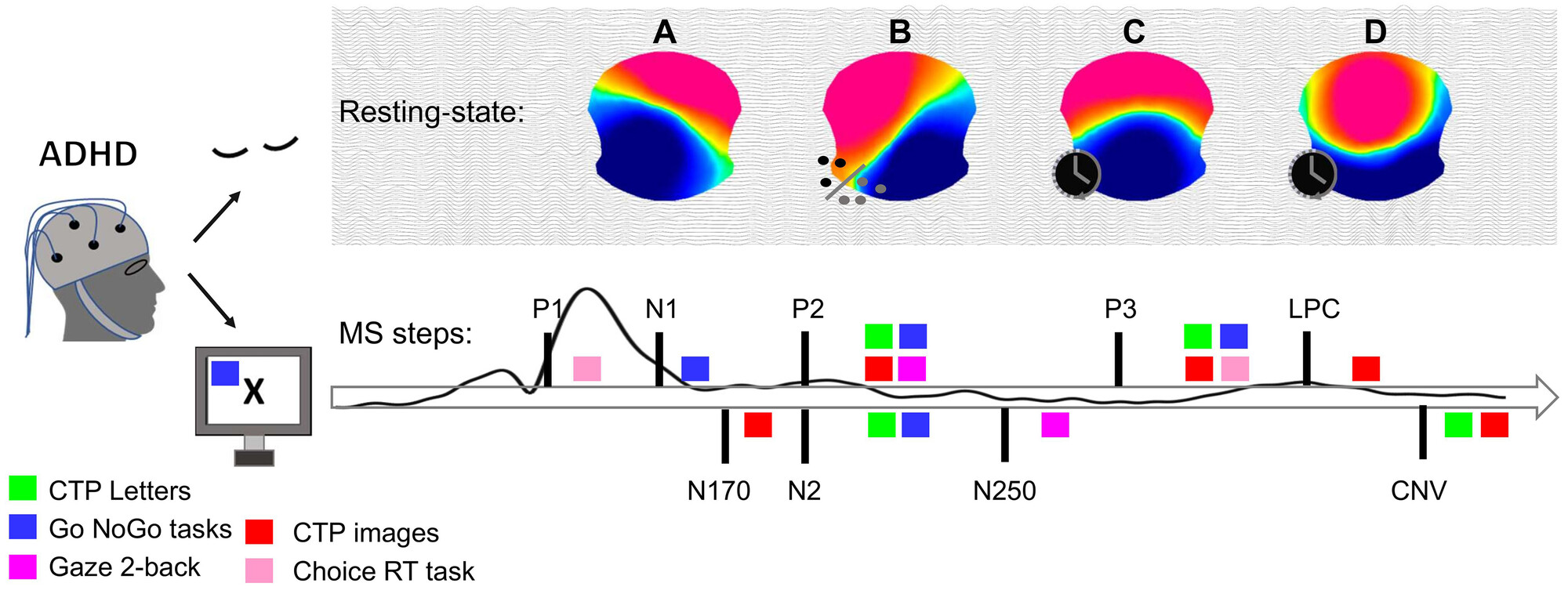
This review emphasizes the value of EEG microstate (MS) analyses in elucidating the neurobiological aspects of ADHD. Evidence from resting-state and task-based research highlights MS analyses' effectiveness in identifying executive dysfunctions and differentiating ADHD subtypes. The findings point to the clinical potential of MS analyses as diagnostic and prognostic tools, underscoring the necessity for standardized methodologies to improve generalizability and replicability.
SPECIAL ISSUE ARTICLE
The impact of transcutaneous vagus nerve stimulation on anterior cingulate cortex activity in a cognitive control task
- First Published: 08 January 2025
Our combined transcutaneous vagus nerve stimulation and functional magnetic resonance imaging (tVNS-fMRI) approach revealed that non-invasive tVNS significantly enhances cognitive control by modulating neural activity in the anterior cingulate cortex. This discovery opens up promising paths for comprehending the brain mechanisms through which tVNS may enhance cognitive functions in neurological disorders. It therefore contributes to advancing our knowledge of tVNS's potential as a therapeutic intervention.
ORIGINAL ARTICLE
Reward and Efficacy Modulate the Rate of Anticipatory Pupil Dilation
- First Published: 10 January 2025
We found pupils dilate in the final moments before a target in a Stroop task. The rate of dilation was more rapid for trials where the participant anticipated a large reward which was performance-contingent, and individual differences in the rate of dilation predicted behavioural performance. These results provide new insights into the nature of preparatory effort and resolve previous contradictory results regarding the role of preparatory effort in pupil dilation.
Enhancing Psychophysiological Well-Being Through Nature-Based Soundscapes: An Examination of Heart Rate Variability in a Cross-Over Study
- First Published: 13 January 2025
To our knowledge, this is the first comprehensive demonstration of the physiological and psychological relaxation benefits derived from nature-based soundscapes. The soundscape, combining a variety of nature sounds with musical elements, increased heart rate variability and decreased both heart and respiratory rates, alongside improved subjective evaluations in emotional, cognitive, and social domains. This highlights the potential of nature-based soundscapes as an accessible therapeutic method.
SPECIAL ISSUE ARTICLE
Stimulate to Remember? The Effects of Short Burst of Transcutaneous Vagus Nerve Stimulation (taVNS) on Memory Performance and Pupil Dilation
- First Published: 15 January 2025
In this study, an emotional memory task assumed to involve the LC-NE system was combined with pupillometry and event-related short bursts of taVNS. Real versus sham stimulation selectively increased memory performance for negative events. Short bursts of stimulation as such (real or sham stimulation), led to an increase in pupil dilation and an improvement in memory performance, possibly due to the attention-inducing sensory modulation of electrical stimulation.
ORIGINAL ARTICLE
Reduced Theta Inter-Trial Phase Coherence in Error Processing: A Marker of Neural Dysfunction in Attention Deficit Hyperactivity Disorder
- First Published: 16 January 2025
Our study sheds new light on the significance of theta inter-trial phase coherence (ITC) as a neurophysiological marker of a core neural dysfunction in ADHD. Our findings suggest that variability in the temporal dynamics of phase synchronization at theta frequencies may underlie the impaired implementation of cognitive control during error processing. Moreover, this neural deficit appears to be related to ADHD symptomatology observed in early childhood.
REGISTERED REPORT
Stage 2 Registered Report: Propositional Thought Is Sufficient for Imaginal Extinction as Shown by Contrasting Participants With Aphantasia, Simulated Aphantasia, and Controls
- First Published: 23 January 2025
When contrasting people with aphantasia (= absence of mental imagery), simulated aphantasia, and controls in a fear conditioning paradigm with subsequent imaginal extinction, we found that visual imagery is not necessary for imaginal extinction to occur. Therefore, imaginal exposure therapy could also be effective for people with aphantasia.
ORIGINAL ARTICLE
Exploring Individual Differences in Interoception Among Athletes Based on a Three-Dimensional Construct of Interoception
- First Published: 25 January 2025

Impact Statement
This is the first study to systematically examine the effect of individual differences on interoception in a population with extensive sensorimotor training based on the three-dimensional construct of interoception. Additionally, this study also adds to the knowledge in the science of sports regarding individual differences in interoception and offers a deeper understanding of athletes’ complex and varied sports performance.
Measuring Realistic Emotional Perception With EEG: A Comparison of Multimodal Videos and Naturalistic Scenes
- First Published: 27 January 2025
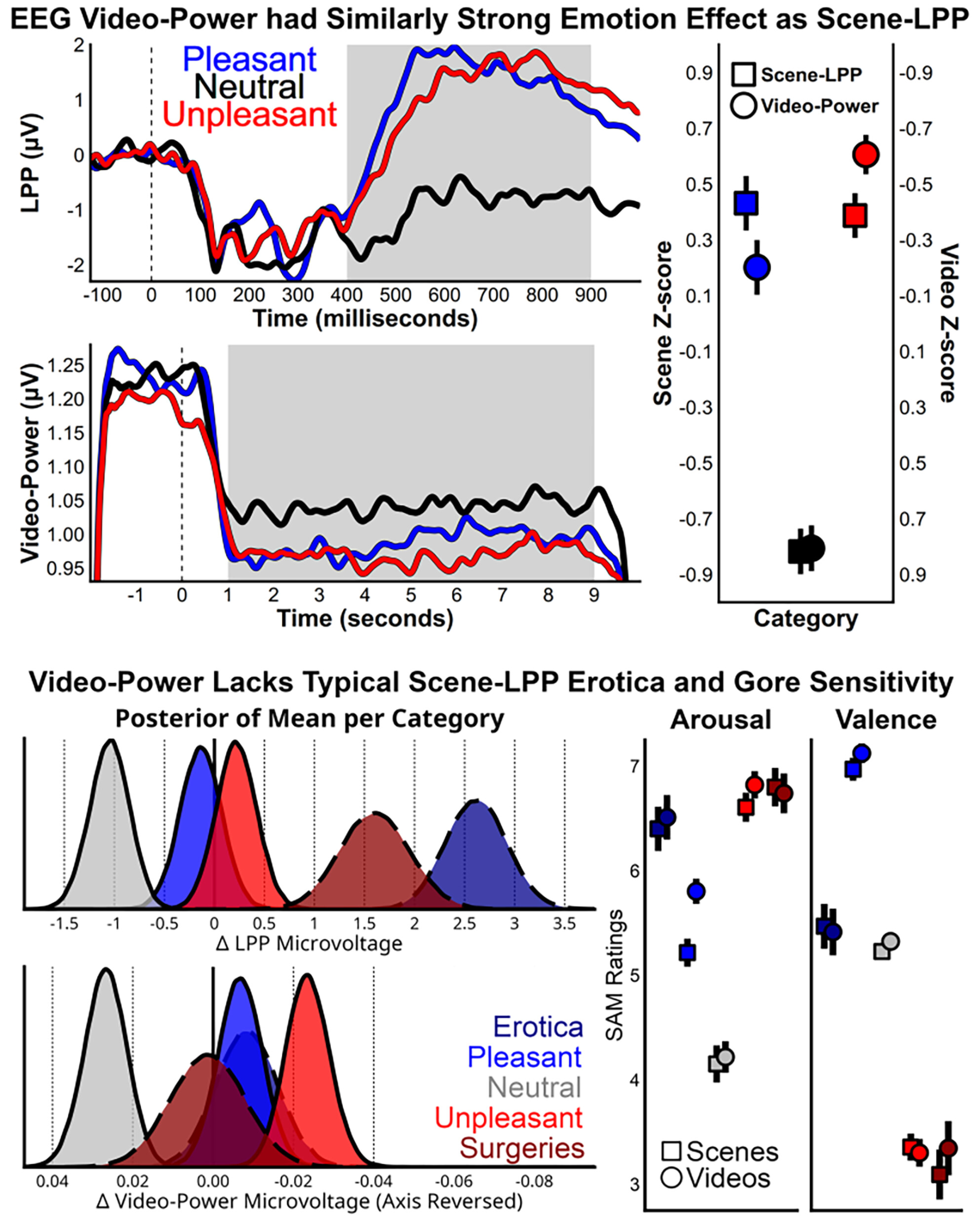
Impact Statement
Matched emotional video and scenes evoke large EEG responses compared with neutral content within-participant. Our findings align with previous research indicating that video modulation of power around the evoked 7.5 Hz ssVEP frequency (7–8 Hz) serves as a reliable emotional measure. However, further analyses reveal that this effect is attributable to a general decrease in power across the 3–10 Hz frequency range.
Neural Correlates of Narrative Reading Development: A Comparative fMRI Study of Adults and Children Using Time-Locked Inter-Subject Correlation Analyses
- First Published: 29 January 2025
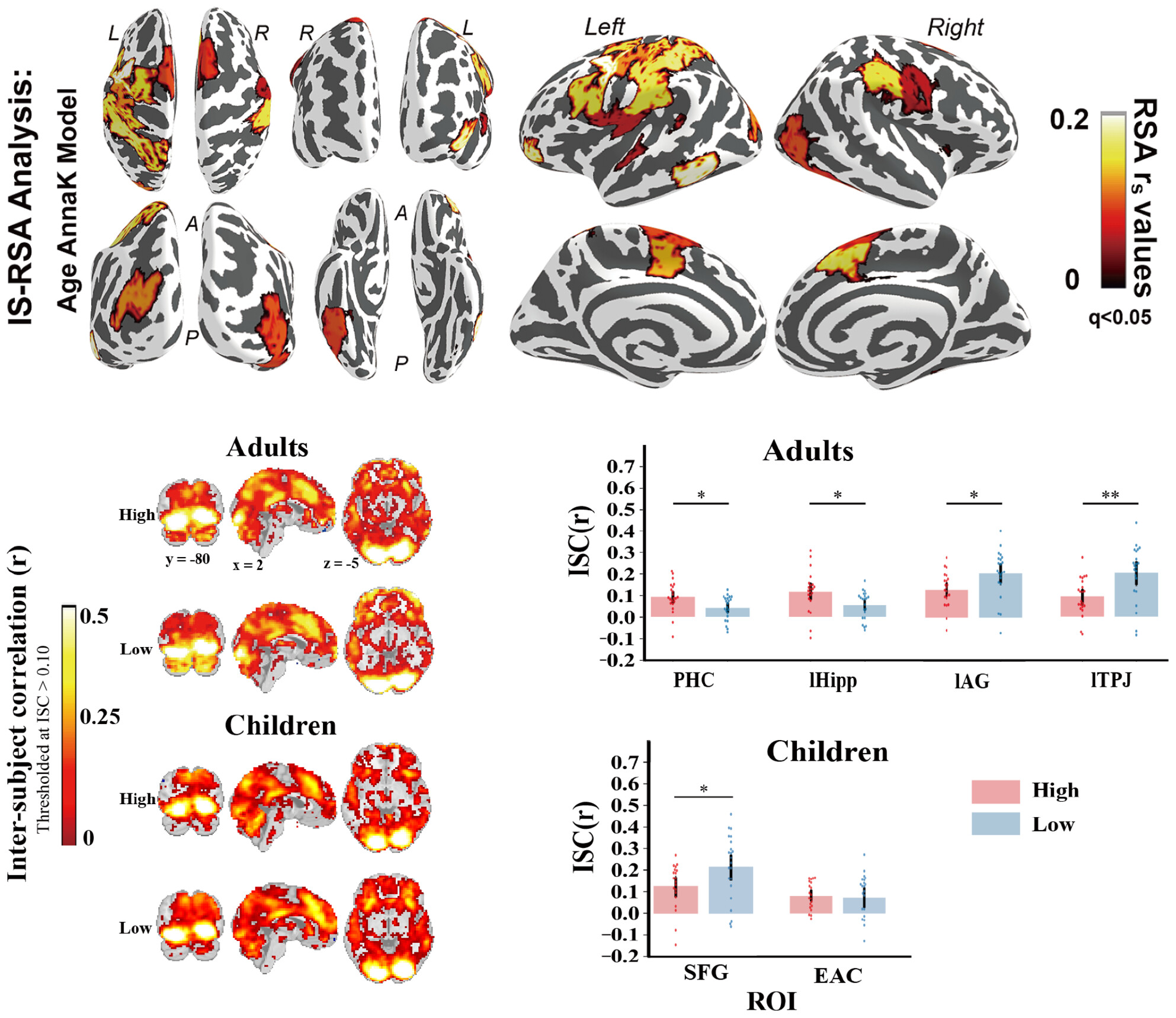
Impact statement
Through extensive analysis of long-time-scale narrative materials, we have discovered that the hippocampus and frontal lobe regions play significant roles in reading development. By employing inter-subject correlation analysis, a better exploration of the neural responses elicited by stimuli was achieved. These results indicate that the maturity and experience plays a crucial role in narrative reading development.






